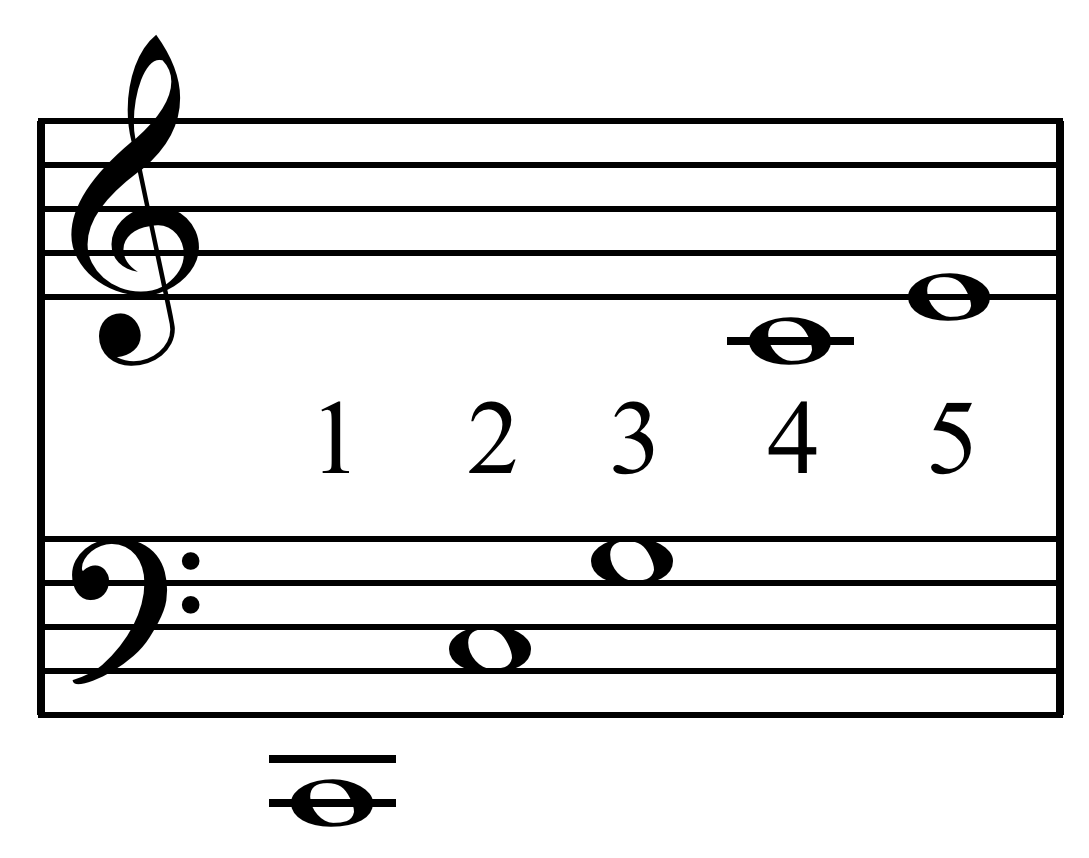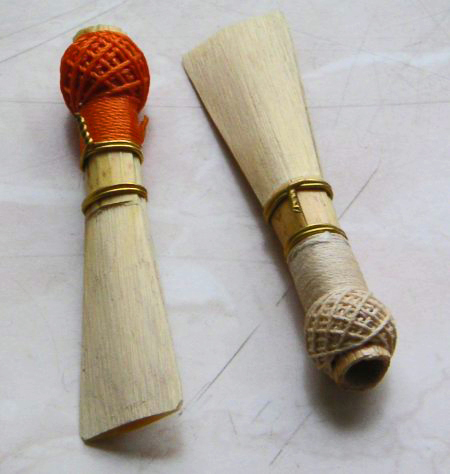|
Microtuner
A microtuner or microtonal tuner is an electronic device or software program designed to modify and test the tuning of musical instruments (in particular synthesizers) with microtonal precision, allowing for the design and construction of microtonal scales and just intonation scales, and for tuning intervals that may differ from those of common Western equal temperament. The term also indicates a high-precision mechanical tuning device found on some vintage Conn brand brass and reed instruments (mostly cornets and alto saxophones). These were first introduced with their 1918 catalog and manufactured until about 1954. Such devices were also offered with some vintage saxophones manufactured in Europe by Beaugnier, Dolnet, Hüller, Keilwerth and other famous makers in the same period. See also * * *Sonoclast Plastic Pitch MIDI Microtuner- Real-time interface for tuning multiple MIDI synths simultaneously. * * * *Tuner (other) Tuner may refer to someone or something whic ... [...More Info...] [...Related Items...] OR: [Wikipedia] [Google] [Baidu] |
|
 |
Just Intonation
In music, just intonation or pure intonation is a musical tuning, tuning system in which the space between notes' frequency, frequencies (called interval (music), intervals) is a natural number, whole number ratio, ratio. Intervals spaced in this way are said to be pure, and are called just intervals. Just intervals (and chords created by combining them) consist of tones from a single harmonic series (music), harmonic series of an implied fundamental frequency, fundamental. For example, in the diagram, if the notes G3 and C4 (labelled 3 and 4) are tuned as members of the harmonic series of the lowest C, their frequencies will be 3 and 4 times the fundamental frequency. The interval ratio between C4 and G3 is therefore 4:3, a just fourth (music), fourth. In Western musical practice, bowed instruments such as violins, violas, cellos, and double basses are tuned using pure fifths or fourths. In contrast, keyboard instruments are rarely tuned using only pure intervals—the desire fo ... [...More Info...] [...Related Items...] OR: [Wikipedia] [Google] [Baidu] |
 |
Synthesizer
A synthesizer (also synthesiser or synth) is an electronic musical instrument that generates audio signals. Synthesizers typically create sounds by generating waveforms through methods including subtractive synthesis, additive synthesis and frequency modulation synthesis. These sounds may be altered by components such as filters, which cut or boost frequencies; envelopes, which control articulation, or how notes begin and end; and low-frequency oscillators, which modulate parameters such as pitch, volume, or filter characteristics affecting timbre. Synthesizers are typically played with keyboards or controlled by sequencers, software or other instruments, and may be synchronized to other equipment via MIDI. Synthesizer-like instruments emerged in the United States in the mid-20th century with instruments such as the RCA Mark II, which was controlled with punch cards and used hundreds of vacuum tubes. The Moog synthesizer, developed by Robert Moog and first so ... [...More Info...] [...Related Items...] OR: [Wikipedia] [Google] [Baidu] |
|
Microtonal Music
Microtonality is the use in music of microtones — intervals smaller than a semitone, also called "microintervals". It may also be extended to include any music using intervals not found in the customary Western tuning of twelve equal intervals per octave. In other words, a microtone may be thought of as a note that falls "between the keys" of a piano tuned in equal temperament. Terminology Microtone ''Microtonal music'' can refer to any music containing microtones. The words "microtone" and "microtonal" were coined before 1912 by Maud MacCarthy Mann in order to avoid the misnomer " quarter tone" when speaking of the srutis of Indian music. Prior to this time the term "quarter tone" was used, confusingly, not only for an interval actually half the size of a semitone, but also for all intervals (considerably) smaller than a semitone. It may have been even slightly earlier, perhaps as early as 1895, that the Mexican composer Julián Carrillo, writing in Spanish or Frenc ... [...More Info...] [...Related Items...] OR: [Wikipedia] [Google] [Baidu] |
|
 |
Equal Temperament
An equal temperament is a musical temperament or Musical tuning#Tuning systems, tuning system that approximates Just intonation, just intervals by dividing an octave (or other interval) into steps such that the ratio of the frequency, frequencies of any adjacent pair of notes is the same. This system yields Pitch (music), pitch steps perceived as equal in size, due to the logarithmic changes in pitch frequency. In classical music and Western music in general, the most common tuning system since the 18th century has been 12 equal temperament (also known as ''12 tone equal temperament'', ' or ', informally abbreviated as ''12 equal''), which divides the octave into 12 parts, all of which are equal on a logarithmic scale, with a ratio equal to the twelfth root of two, 12th root of 2, (\sqrt[12] ≈ 1.05946). That resulting smallest interval, the width of an octave, is called a semitone or half step. In Western world, Western countries the term ''equal temperamen ... [...More Info...] [...Related Items...] OR: [Wikipedia] [Google] [Baidu] |
 |
Brass Instrument
A brass instrument is a musical instrument that produces sound by Sympathetic resonance, sympathetic vibration of air in a tubular resonator in sympathy with the vibration of the player's lips. The term ''labrosone'', from Latin elements meaning "lip" and "sound", is also used for the group, since instruments employing this "lip reed" method of sound production can be made from other materials like wood or animal horn, particularly early or traditional instruments such as the cornett, alphorn or shofar. There are several factors involved in producing different Pitch of brass instruments, pitches on a brass instrument. Slide (wind instrument), Slides, Brass instrument valve, valves, Crook (music), crooks (though they are rarely used today), or Key (instrument), keys are used to change vibratory length of tubing, thus changing the available harmonic series (music), harmonic series, while the player's embouchure, lip tension and air flow serve to select the specific harmonic produ ... [...More Info...] [...Related Items...] OR: [Wikipedia] [Google] [Baidu] |
 |
Reed (music)
A reed (or lamella) is a thin strip of material that vibrates to produce a sound on a musical instrument. Most woodwind instrument reeds are made from '' Arundo donax'' ("Giant cane") or synthetic material. Tuned reeds (as in harmonicas and accordions) are made of metal or synthetics. Musical instruments are classified according to the type and number of reeds. The earliest types of single-reed instruments used idioglottal reeds, where the vibrating reed is a tongue cut and shaped on the tube of cane. Much later, single-reed instruments started using heteroglottal reeds, where a reed is cut and separated from the tube of cane and attached to a mouthpiece of some sort. By contrast, in an uncapped double reed instrument (such as the oboe and bassoon), there is no mouthpiece; the two parts of the reed vibrate against one another. Single reeds Single reeds are used on the mouthpieces of clarinets and saxophones. The back of the reed is flat and is placed against the mouthpiece. ... [...More Info...] [...Related Items...] OR: [Wikipedia] [Google] [Baidu] |
|
Cornet
The cornet (, ) is a brass instrument similar to the trumpet but distinguished from it by its conical bore, more compact shape, and mellower tone quality. The most common cornet is a transposing instrument in B. There is also a soprano cornet in E and cornets in A and C. All are unrelated to the Renaissance and early Baroque cornett. History The cornet was derived from the posthorn by applying valves to it in the 1820s. Initially using Stölzel valves, by the 1830s, Parisian makers were using the improved Périnet piston valves. Cornets first appeared as separate instrumental parts in 19th-century French compositions.''Encyclopædia Britannica'', Micropedia, Volume III, William Benton, Chicago Illinois, 1974, p. 156 The instrument could not have been developed without the improvement of piston valves by Silesian horn players Friedrich Blühmel (or Blümel) and Heinrich Stölzel, in the early 19th century. These two instrument makers almost simultaneously invented valv ... [...More Info...] [...Related Items...] OR: [Wikipedia] [Google] [Baidu] |
|
|
Saxophone
The saxophone (often referred to colloquially as the sax) is a type of single-reed woodwind instrument with a conical body, usually made of brass. As with all single-reed instruments, sound is produced when a reed on a mouthpiece vibrates to produce a sound wave inside the instrument's body. The pitch is controlled by opening and closing holes in the body to change the effective length of the tube. The holes are closed by leather pads attached to keys operated by the player. Saxophones are made in various sizes and are almost always treated as transposing instruments. A person who plays the saxophone is called a ''saxophonist'' or ''saxist''. The saxophone is used in a wide range of musical styles including classical music (such as concert bands, chamber music, solo repertoire, and occasionally orchestras), military bands, marching bands, jazz (such as big bands and jazz combos), and contemporary music. The saxophone is also used as a solo and melody instrument or as a mem ... [...More Info...] [...Related Items...] OR: [Wikipedia] [Google] [Baidu] |
|
 |
Keilwerth
The Julius Keilwerth company is a German saxophone manufacturer, established in 1925. Company history Early history Julius Keilwerth first apprenticed for the Kohlert company in Graslitz, Czechoslovakia. After this apprenticeship, Julius Keilwerth and his brother, Max, established a workshop in their home around 1925 or 1926. They primarily manufactured saxophones for Adler and F. X. Hüller. The Julius Keilwerth company became one of the largest saxophone manufacturers in Europe by the start of WWII, with approximately 150 workers. After World War II, the company relocated to its present headquarters at Nauheim, Germany. In 1948, the old Julius Keilwerth production facilities in Graslitz, now Kraslice, became part of the Czech Amati Kraslice, Amati collective, however the first saxophones that Amati sold were still stamped with the "JGK - Best in the World" trademark, had the model name "Toneking" and had Julius Keilwerth serial numbers. Changes in ownership Boosey & Hawkes p ... [...More Info...] [...Related Items...] OR: [Wikipedia] [Google] [Baidu] |